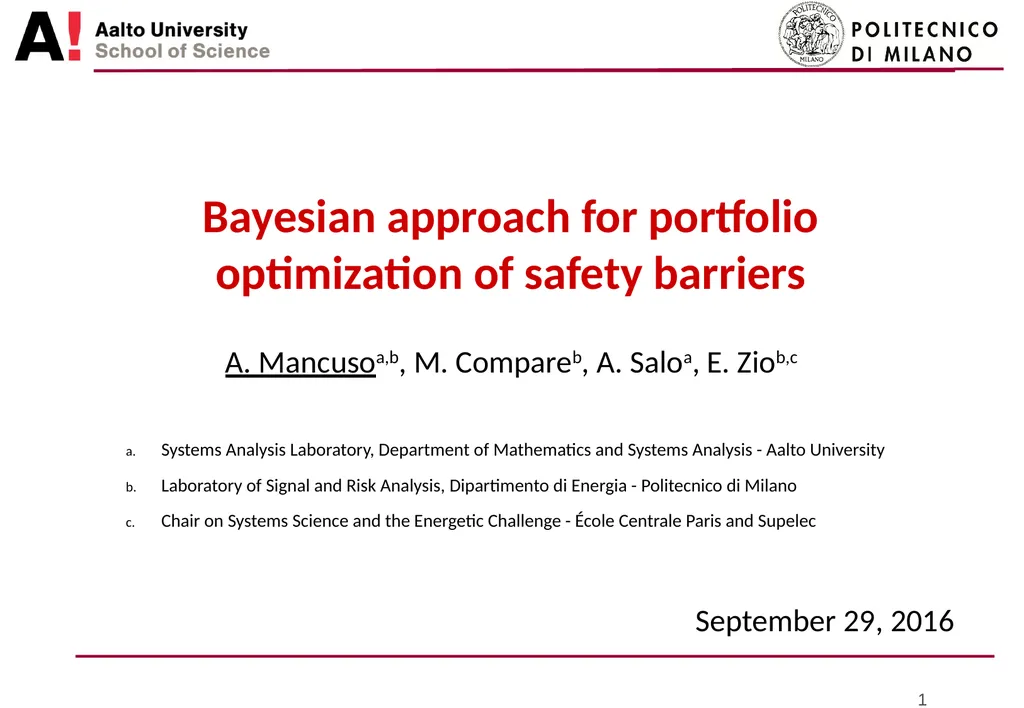
Bayesian approach for portfolio optimization of
Author: tatyana-admore | Published: 2025-08-13
Description: Bayesian approach for portfolio optimization of safety barriers September 29, 2016 A. Mancusoa,b, M. Compareb, A. Saloa, E. Ziob,c Systems Analysis Laboratory, Department of Mathematics and Systems Analysis - Aalto University Laboratory of
Download Presentation
Download the PPT/PDF: Download
Transcript:
Loading transcript…